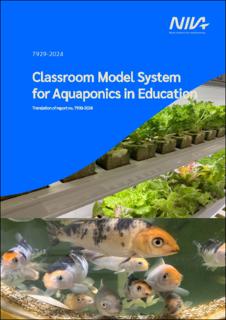| dc.contributor.author | Hairabedian, Gabrielle | |
| dc.contributor.author | Barkved, Line Johanne | |
| dc.contributor.author | Hess-Erga, Ole-Kristian | |
| dc.contributor.author | Ribeiro, Anne Luise | |
| dc.contributor.author | Meland, Sondre | |
| dc.contributor.author | Maitre-Ekern, Eléonore | |
| dc.contributor.author | Øyen, Håkon | |
| dc.contributor.author | Tronerud, Theodor Tinius | |
| dc.contributor.author | Hovde, Ann Iren | |
| dc.contributor.author | Lindholt, Jonathan Grevstad | |
| dc.contributor.author | Sørensen, Line Gjeilo | |
| dc.contributor.author | Pettersen, Marte | |
| dc.contributor.author | Antonsen, Iselin | |
| dc.date.accessioned | 2024-02-06T08:17:08Z | |
| dc.date.available | 2024-02-06T08:17:08Z | |
| dc.date.created | 2024-02-05T11:11:51Z | |
| dc.date.issued | 2024 | |
| dc.identifier.isbn | 978-82-577-7665-7 | |
| dc.identifier.issn | 1894-7948 | |
| dc.identifier.uri | https://hdl.handle.net/11250/3115831 | |
| dc.description | Prosjektleder: Gabrielle Hairabedian | en_US |
| dc.description | English version of NIVA-rapport 7930-2024. | |
| dc.description.abstract | This represents a classroom model system (CMS) or instructional tool for teachers to implement collaborative learning through different modules relevant to aquaponics. It can be adapted and customized as needed and utilizes aquaponics as a learning arena to explore existing global challenges. It links with the Small-Scale Urban Pilot Installation developed within the USAGE project in Norway at Natur videregående skole (Natur VGS), a high school/upper secondary school in Oslo. The Norwegian National Curriculum has provided an overall point of departure for this work along with specified subjects and curriculum at Natur VGS. The varying subject curricula selected include: Agriculture, fishing and forestry; Natural science; English; Mathematics; Agriculture and horticulture; Chemistry; and Biology. Six topical teaching and learning modules provide background information and examples of activities and discussion topics that connect to aquaponics. The modules include: Sustainability; Plant growth, health and development; Animal welfare; Water chemistry and quality; Urban farming; and Economy and business operations. Aquaponics provides an opportunity for interdisciplinary learning across many subjects and through aquaponics, there is the potential to enrich classes in Science, Technology, Engineering, and Mathematics (STEM). This CMS aims to provide standard methods for the implementation of aquaponics in teaching or as a learning arena for high school/upper secondary school classrooms in Norway. | en_US |
| dc.description.sponsorship | EEA/Norway Grants 2014-2021 through NCBR NOR/IdeaLab/USAGE/0004/2020 | en_US |
| dc.language.iso | eng | en_US |
| dc.publisher | Norsk institutt for vannforskning | en_US |
| dc.relation.ispartof | NIVA-rapport | |
| dc.relation.ispartofseries | NIVA-rapport;7929-2024 | |
| dc.subject | Bærekraft | en_US |
| dc.subject | Sustainability | en_US |
| dc.subject | Utdanningsressurser | en_US |
| dc.subject | Educational Resources | en_US |
| dc.subject | Plantevekst | en_US |
| dc.subject | Plant Growth | en_US |
| dc.subject | Aquaponics | en_US |
| dc.subject | Aquaponics | en_US |
| dc.title | Classroom Model System for Aquaponics in Education | en_US |
| dc.title.alternative | Klasseromsmodellsystem for akvaponi i utdanningen [NIVA-rapport 7930-2024] | en_US |
| dc.type | Research report | en_US |
| dc.description.version | publishedVersion | en_US |
| dc.rights.holder | © Norwegian Institute for Water Research. The publication may be freely cited with attribution. | en_US |
| dc.subject.nsi | VDP::Matematikk og naturvitenskap: 400 | en_US |
| dc.subject.nsi | VDP::Mathematics and natural scienses: 400 | en_US |
| dc.source.pagenumber | 68 | en_US |
| dc.source.issue | 7929-2024 | en_US |
| dc.identifier.cristin | 2243146 | |
| cristin.ispublished | true | |
| cristin.fulltext | original | |
